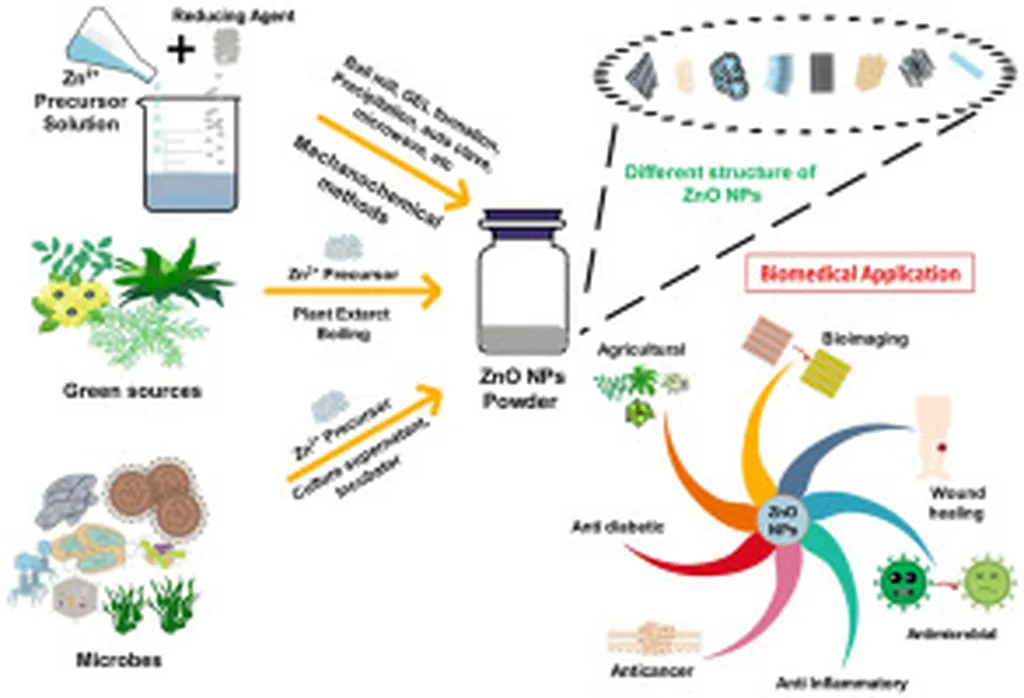In a groundbreaking study published in the journal *Advances in Materials Science and Engineering* (translated as *Advances in Materials Science and Engineering*), researchers have unlocked new potential for zinc oxide nanoparticles (ZnO-NPs) in the energy and environmental sectors. The research, led by Negesa Bogala Bekela from the Department of Chemistry, explores how combining ZnO-NPs with iron oxide (Fe2O3) and doping them with nitrogen (N) and sulfur (S) can significantly enhance their photocatalytic, antibacterial, and electrochemical properties.
ZnO-NPs have long been favored for their low toxicity, biodegradability, and stability. However, their large energy bandgap and tendency for electron–hole recombination have limited their effectiveness in various applications. “By incorporating Fe2O3 and doping with N and S, we were able to address these limitations and substantially improve the performance of ZnO-NPs,” explains Bekela.
The study prepared pure ZnO-NPs, Fe2O3-ZnO nanocomposites, and S/N-codoped Fe2O3-ZnO nanocomposites using a precipitation technique. The samples were characterized through various methods to verify their composition, crystallinity, crystallite size, functional groups, and morphology. The photocatalytic performance was evaluated by subjecting methylene blue (MB) dye to visible light in the presence and absence of the synthesized materials.
The results were striking. The incorporation of Fe2O3 into ZnO and doping with N and S lowered the bandgap energy of pure ZnO-NPs from 2.96 eV to 2.50 eV, significantly enhancing their photocatalytic and antibacterial activities. After 120 minutes of visible light exposure with continuous stirring, the optimized S/N-codoped Fe2O3-ZnO nanocomposites achieved a MB degradation efficiency of 98.5%, notably surpassing the 78% efficiency of pure ZnO-NPs.
“This research opens up new avenues for the development of more efficient and cost-effective materials for water treatment, energy storage, and environmental remediation,” says Bekela. The enhanced properties of the S/N-codoped Fe2O3-ZnO nanocomposites are primarily attributed to the reduced bandgap, increased surface area, and diminished electron–hole recombination resulting from Fe2O3 incorporation and N/S codoping.
The commercial implications of this research are substantial. In the energy sector, these advanced materials could lead to more efficient solar cells and photocatalytic systems, reducing the cost and environmental impact of energy production. In the environmental sector, they could revolutionize water treatment processes, making them more effective and sustainable.
As the world grapples with the challenges of climate change and environmental degradation, innovations like these are crucial. “Our findings not only advance the scientific understanding of nanocomposites but also pave the way for practical applications that can make a real difference,” Bekela concludes.
Published in *Advances in Materials Science and Engineering*, this study represents a significant step forward in the field of materials science, with the potential to shape future developments in energy and environmental technologies. The research highlights the importance of interdisciplinary collaboration and the power of innovative thinking in addressing global challenges.

